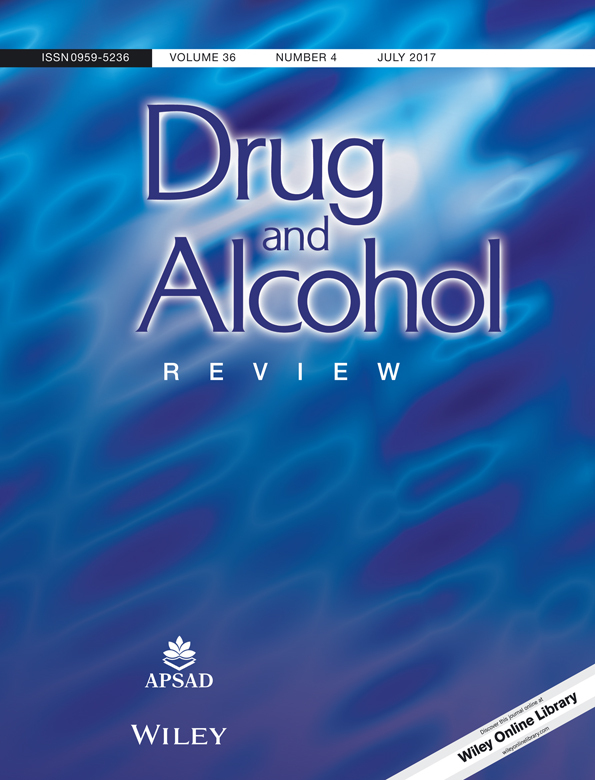Letter to the Editor
Populations and areas most at risk of methamphetamine-related harms: A commentary on Degenhardt et al.
Cindy Woods,
Kim Usher,
Corresponding Author
Cindy Woods
School of Health, University of New England, Armidale, Australia
Search for more papers by this authorKim Usher
School of Health, University of New England, Armidale, Australia
Search for more papers by this authorCindy Woods,
Kim Usher,
Corresponding Author
Cindy Woods
School of Health, University of New England, Armidale, Australia
Search for more papers by this authorKim Usher
School of Health, University of New England, Armidale, Australia
Search for more papers by this authorNo abstract is available for this article.
References
- 1Degenhardt L, Sara G, McKetin R, et al. Crystalline methamphetamine use and methamphetamine-related harms in Australia. Drug Alcohol Rev 2016 [Epub prior to publication].
- 2 Centre for Epidemiology and Evidence. Health Stats NSW. Sydney: NSW Ministry of Health. Available at: www.healthstats.nsw.gov.au (accessed 14 July 2016).
- 3 NSW Public Health Rapid, Emergency, Disease and Syndromic Surveillance (PHREDSS) system. Centre for Epidemiology and Evidence, NSW Ministry of Health.
- 4Sullivan C, Staib A, Khanna S, et al. The National Emergency Access Target (NEAT) and the 4-hour rule: time to review the target. Med J Aust 2016; 204: 354–358.
- 5 NSW Combined Admitted Patient Epidemiology Data and ABS population estimates (SAPHaRI). Centre for Epidemiology and Evidence, NSW Ministry of Health.
- 6 Australian Institute of Health and Welfare 2010. National best practice guidelines for collecting Indigenous status in health data sets. Cat. no. IHW 29. Canberra: AIHW. Available at http://www.aihw.gov.au/WorkArea/DownloadAsset.aspx?id=6442458760 (accessed 27 August 2016).
- 7 Australian Institute of Health and Welfare. Indigenous identification in hospital separations data—quality report. Health Services Series no. 35. Cat. no. HSE 85. Canberra: AIHW, 2010.
- 8 Department of Health and Ageing. The Improving Indigenous Identification in Communicable Disease Reporting Project Steering Committee. Improving indigenous identification in communicable disease reporting systems—a discussion paper. (November 2004). Available at: www.publichealth.gov.au/publications/improving-indigenous-identification-in-communicable-disease-reporting-systems.html (accessed 27 August 2016).
- 9Vos T, Barker B, Begg S, Stanley L, Lopez AD. Burden of disease and injury in Aboriginal and Torres Strait Islander Peoples: the Indigenous health gap. Int J Epidemiol 2009; 38: 470–477.
- 10 Australian Institute of health and Welfare. National Drug Strategy Household Survey detailed report: 2013. Canberra (AUST): AIHW, 2014.
- 11 National Indigenous Drug and Alcohol Committee/National Aboriginal Community-Controlled Health Organisation. Online consultation: amphetamine type stimulant use. Canberra: National Indigenous Drug and Alcohol Committee, 2014.
- 12Usher K, Clough A, Woods C, Robertson J. Is there an ice epidemic in Australia? Int J Ment Health Nurs 2015; 24: 283–285.
- 13Le Cong M, Finn E, Parsch CS. Management of the acutely agitated patient in a remote location. Med J Aust 2015; 202: 182–183.




